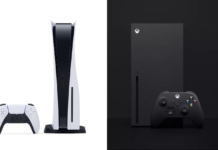I’ve been rocking out on electric guitar for 7 years, now. I’m also a huge fan of the Guitar Hero and Rock Band franchises and learned how to master destroying colorful gems on fake guitar while I was practicing scales and chords on the real one. While much of the Internet likes to separate the two skill sets as much as possible, guitar and Guitar Hero have always been closely linked in my mind. When Rock Band announced their support for Pro Guitar, which was essentially real guitar tablature within the game engine, I could not have been more excited. Rock Band 3 whet my appetite for a true guitar experience in a video game, but I felt like it didn’t go far enough. Then, Rocksmith came along.
Rocksmith is a better real guitar experience than Rock Band 3. Nearly everything about playing the game, from the interface to the mechanics and even the ability to plug in any guitar you own, is ideal. Ubisoft developed their own style of presentation that, for the most part, exceeds Rock Band 3’s Pro mode. Notes are visible much earlier to the player, the camera dictates how much of the fretboard you should be focused on at any given time, and each distinct section of a song has its own level progression. If you’re awesome at guitar riffs and chords but just can’t get the hang of solos, the faster and more complex sections will stick to a difficulty range you can handle. While I may struggle in Rock Band 3 to complete a song before practicing it, Rocksmith’s notation is so intuitive that I rarely need to dig into their practice tools outside of solos. I was surprised by how quickly I was learning to play each song I loaded up. In many examples, it was quicker than reading standard guitar tablature!

Progressing the difficulty of sections individually instead of committing to an entire song’s transcription is Rocksmith’s biggest strength and greatest weakness. Different players have different talents, so it makes sense to have a system that tries to conform to what you’re good at while continuing to push you forward. Thankfully, the game does a relatively good job at guessing your skill level after the first couple songs. Experienced guitarists won’t have to start from rock bottom every time, and that’s great. While the leveling system is fantastic at first, it sadly tends to break down as you try to unlock the 100% chart.
The difficulty progression has a few quarks that make it tough for users that want the full experience. The best way to level up a chart is to go through the leveler practice mode for the song. In this mode, the game gives you an entire section and, based on your performance, will slowly add notes until it reaches 100% transcription. The problem is, sometimes removing notes destroys the flow of a pattern and makes it more difficult. Changes to the rhythm of a section can be disorientating, especially if arbitrary breaks are added to sections that normally have a constant rhythm. Leveling sections can be a huge pain on its own as many solos require you to hit every single note of the section before advancing to the next level. Complicating this process even further, the game kicks you out of the mode for every 5 failed attempts you make at leveling a section. This is absolute torture since getting back into the mode takes almost an entire minute of waiting for loading screens and re-tuning your guitar. The system is absolutely fantastic when it works, but when it starts to fall apart around you, it can become incredibly frustrating.

One of the most defining features of Rocksmith is the ability to plug in any electric guitar you own for use in the game. This allows them to pump the audio from your guitar through their simulated pedals and amps to create a sound similar to the one used in the song you’re playing. The result is the ability to hear your guitar next to the song you’re covering, and it all sounds like it fits. For experienced guitarists, this is awesome. Well, at least until you start playing poorly. Hearing your guitar’s sound is only fun when your playing is of a certain quality. When I’m rocking out to “Panic Switch” or “Outshined,” there’s a connection to the music that I have never had before in a rhythm game. I cannot overstate how awesome that feels. However, if I’m stumbling through a solo in “Sweet Home Alabama,” that connection is broken and I’m reminded that I still have a lot to learn. Ultimately, hearing your guitar is only as good as you are at playing guitar.
If you’re a guitarist who likes video games, I highly recommend giving Rocksmith a shot. It has a lot of problems, mostly in its UI and leveling structure, but they’re easy to look past because the game is just so enjoyable when it clicks. While it has a slow start, especially if you already know your way around the guitar, once they remove the training wheels it all feels worth it. Unfortunately, some of Rocksmith’s attempts to be a game get in the way of enjoying the product for what it is. It feels like an incredible piece of guitar software shoehorned into a gaming shell. I don’t believe I’m going to drive up high scores in Rocksmith like I used to back in my Guitar Hero and Rock Band days, but maybe that’s for the better. I’m gaining something a lot more tangible than a high score. I’m honing my skill as a guitarist.










